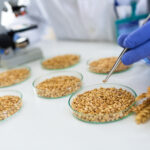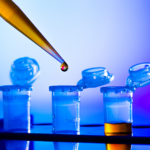Shipping into the European Union: How to Comply with GMO Regulations for Food Products
Exporters to the European Union (EU) need to know how to be in compliance with regulations regarding genetically modified organisms (GMOs). This article presents three key points exporters must consider when shipping food products into the EU market: GMO labeling, GMO authorization, and GMO testing.
The EU was one of the first regions in the world to regulate the use of GMOs. Regulations (EC) 1829/2003 and 1830/2003 have been in effect since April 2004.
GMO Labeling
EU regulations require “genetically modified” labeling for food products consisting of, containing, or produced from GMOs. To avoid this mandatory labeling requirement, exporters to the EU must be in a position to demonstrate that they have taken appropriate steps to avoid the presence of GMOs.
Key requirements to avoid mandatory labeling:
- Documented traceability
The EU rules require traceability of food ingredients back to their source materials. A well-documented traceability and identity preservation (IP) program may demonstrate reasonable precaution and due diligence in keeping GMOs out of a product.
With such a system in place, any traces of GMOs may be considered to be “adventitious” or “technically unavoidable.”
- GMO proportion must be no higher than the threshold
Despite the fact that a producer has avoided using GMOs in food, genetically modified material may be present in trace amounts due to adventitious or technically unavoidable presence during seed production, cultivation, harvest, transportation, storage, or processing.Therefore, the EU has established a 0.9% GMO threshold, per ingredient, for application of the mandatory labeling requirement. “Genetically modified” labeling is not required if the percent GMO is no higher than 0.9% per ingredient, provided that any GMO presence is “adventitious” or “technically unavoidable.”
GMO Authorization
Before a GMO can be used in food in the EU market, it must first be authorized by the EU for this purpose. The authorization process includes a scientific evaluation followed by a risk management decision. Authorized GMOs may be used in food throughout the European Union.
- GMOs authorized by the EU may be used in food at any level, but are subject to the labeling requirement described above.
- GMOs not authorized by the EU cannot be used in the EU in food, since the EU has zero tolerance for any GMO that has not been authorized.
GMO Testing
To check for compliance with EU regulations and to meet contract specifications, many exporters test each product lot before export to the EU. Exporters typically send samples to an accredited laboratory that uses the Real-Time PCR (polymerase chain reaction) test method.
This is the GMO test method used by the EU authorities for surveillance testing, and is the method used worldwide to verify contracts and ensure regulatory compliance.
- To determine the percent GMO of a product/ingredient, exporters use Quantitative PCR analysis
Quantitative test results show the percent GMO relative to a specific species, such as soy.Example: If a sample is tested to determine the percent GMO of the soy flour ingredient, a favorable test result could be “0.7% GMO relative to total soy DNA.”Please note that Quantitative PCR analysis requires a sufficient amount of DNA. The DNA in a processed ingredient may be degraded due to heat or other processing methods, and thus may not be sufficiently intact for valid quantitative analysis by PCR.Since EU regulations require labeling if the food is produced from GMOs, irrespective of the detectability of the DNA in the final product, it may be necessary to test at an earlier stage of production. For example, rather than testing refined soybean oil, testing could instead be conducted on a precursor: the crude oil, or the lot of soybeans from which the oil is derived. Test results may then be linked to the refined oil ingredient by lot-specific traceability records. - To check for the presence of a GMO that has not been authorized by EU, exporters use Qualitative PCR analysisQualitative test results show that GMO DNA is “Detected” or “Not detected.” The limit of detection of the PCR method is generally acknowledged to be 0.01%.Example: If a specific kind of GM corn is commercialized in the U.S., but not yet authorized by the EU, an exporter may need to test for it. Since the EU has zero tolerance for any unauthorized GMOs in food, Qualitative analysis—rather than Quantitative analysis—is appropriate.
Choosing a GMO Testing Laboratory
To optimally meet your GMO testing requirements, choose a laboratory that delivers:
- Accurate test results. The signs of a technically competent GMO testing lab include ISO 17025 accreditation, optimized methods for processed and multi-ingredient samples, and many years’ experience in GMO testing.
- Knowledgeable customer service. Specialists at an experienced GMO testing lab can help you select the appropriate GMO test plan for your particular product and/or situation.
To learn more, read the article, Choose the Right GMO Testing Lab — 7 Key Points






